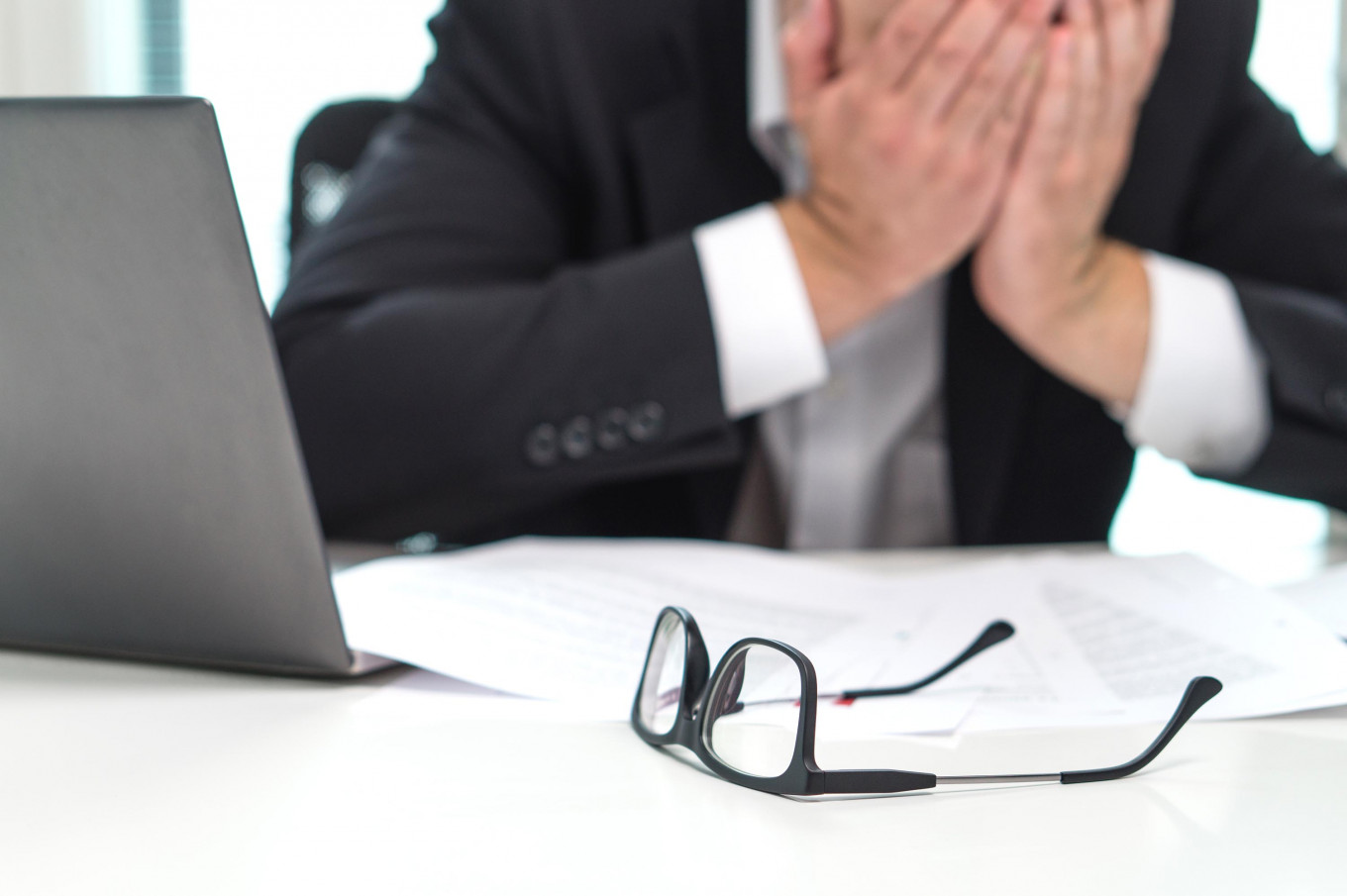Stopping work burnout in its tracks during COVID-19
A steep decline in productivity, decreased ability to focus and concentrate on one’s tasks and continuously making mistakes at work were major symptoms of burnout.
Change Size

L
ina (name has been changed to protect privacy), a 38-year-old online news reporter based in Jakarta, is usually enthusiastic about her daily field reporting and writing grind, activities which usually take more than 12 hours every day. Her colleagues liked her reliability and productivity.
However, since voluntarily isolating herself in a West Jakarta boarding house when the coronavirus outbreak was first announced in Indonesia in March 2020, things have begun to change for Lina. Her colleagues have started complaining that she constantly misses her deadlines, with her overall productivity declining.
“I have tended to become more emotional; I can be easily offended by my colleagues’ feedback… I’ve begun losing interest in the political issues that previously intrigued me,” she said.
She told The Jakarta Post that in early June 2020, her editor’s harsh criticism had caused her to sob loudly alone in her boarding room; something that had never happened before.
Lina’s situation shows some of the hallmarks of work burnout, according to clinical psychologist Rahajeng Ika.
Burnout is different from distress: “You start losing interest in things that previously gave you joy, both at work and in your own personal life; you start to take things too personally. For instance, previously you were okay when your supervisor reprimanded you, but this time, even slight criticism can cause you to cry,” Rahajeng explained.
Alexander Sriewijono from people development consultancy Daily Meaning said that a steep decline in productivity, decreased ability to focus and concentrate on one’s tasks and continuously making mistakes at work were major symptoms of burnout.
“Previously, the person could handle challenges and high demands, but all of a sudden, she can’t because her energy has been depleted as the challenges and deadlines given to her far exceed her capabilities,” Alexander said.
“The more intense the work becomes, the heavier the workload, the more likely it is for burnout to occur,” he warned, adding that burnout was also more likely during the stressful times of the COVID-19 pandemic. A lot of companies have been forced to lay off people, and have hence had to handle more projects with smaller teams.
Lina said that since she started working from home during the pandemic, her supervisors had started to give her more assignments under the assumption that she would be doing nothing else at home anyway.
“Having to stare at the screen all the time for various online meetings, online press conferences, webinars – not only do my eyes get tired easily, I also get bored. As a field reporter, I’d rather go out in the field and interview people face-to-face, but under these circumstances, what else can I do?” she said, phlegmatically.
Her constant exposure to scary and anxiety-provoking news related to the pandemic has also exacerbated her condition.
Chronic work burnout is no joke. Left untreated, the prolonged condition can cause the following physical consequences: hypercholesterolemia, type 2 diabetes, heart disease and various cardiovascular diseases, chronic musculoskeletal pain and aches, gastrointestinal issues, work accidents, severe injuries and early death, according to meta-analysis published by the United States National Library of Medicine.
If the various health hazards do not sound scary to you as an employer, wait until you hear about the organizational consequences of work burnout. According to a 2019 World Health Organization (WHO) study, work burnout costs the global workforce an estimated US$1 trillion in lost productivity per annum.
The lost productivity is caused by high absenteeism among employees, growing cynicism about work and all the errors committed by burned-out workers.
Alexander said short-term and long-term solutions were needed to overcome burnout among workers.
“When one of my colleagues start to appear exhausted, I will tell him or her to take an extra day off immediately, the next day if possible. Also, do not save the extra day off until a few weeks or months later, take it immediately, because delaying your break will only prolong your burnout. If a person is dehydrated then she needs to drink mineral water right now, she can’t afford to wait much longer,” he said.
He also advised workers to stay away from work-related matters during their breaks and do things they love.
Lina heeds such advice: “I wake up at 5 a.m. and go jogging in the forest area of Gelora Bung Karno sports complex and turn to cooking and meditation daily to soothe myself. I never look at my smartphone during these activities, so I can avoid looking at work-related stuff”.
Allowing your team members to take these short breaks will also benefit you, as they will return to work more refreshed, helping them to renew their productivity and creativity, according to Alexander.
Alexander said that long-term solutions would entail restructuring workloads amid the COVID-19-induced economic contraction. “Team members need to back each other up more than ever,” he said.









